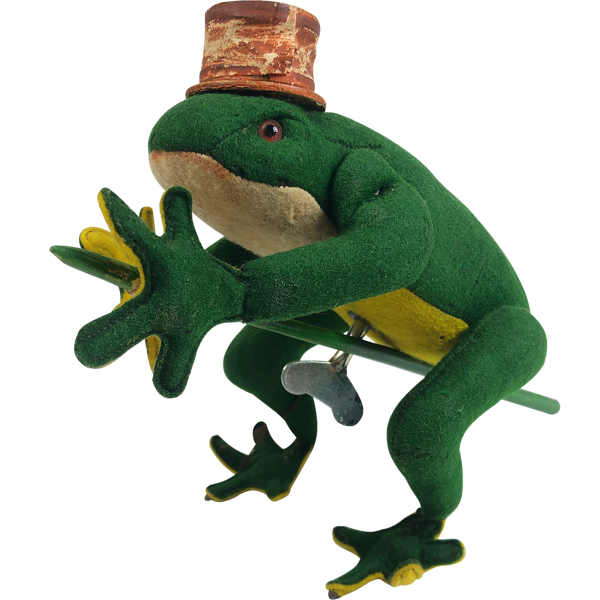
- DE
- EN
- FR


While railways, ships and tin toys powered by steam engines remained the preserve of boys, here you see classic girls' toys from the Bing company.
In its production, Bing used the ideas of other toy manufacturers quite bluntly.
Around 1904, Margarethe Steiff's teddy bears began their triumphal march. They conquered the children's rooms and became competition for dolls, steam engines and trains. So the Bing brothers began to produce felt and plush toys as well. The first Bing bears appeared shortly after Margarethe Steiff's teddy bears. Not only did they look amazingly similar to their models. From 1907 onwards, the term "Teddy" also appeared in the Bing catalogues and there was even a button in the ear.
However, Steiff had had the "button in the ear" protected. Finally, in 1909, a patent dispute arose, which Bing lost. After that, the Bing trademark was placed on the side of the body or on the arm.
You can see this clearly in this elephant on wheels. Here, too, the similarity to animals by Margarethe Steiff is no coincidence. Not only was the elephant the first animal Margarethe Steiff brought onto the market in 1880. Moreover, the Steiff company also had models on offer that were mounted on wheels.
The company was also not very squeamish when it came to copying the handmade Käthe Kruse dolls. Bing openly marketed its own machine-made and mass-produced dolls as "imitations of Käthe Kruse dolls". But Käthe Kruse also fought back and won the case in 1925. It was the first major copyright lawsuit in the German toy industry.
To distinguish himself from the Käthe Kruse models, Bing also produced mechanised dolls like the dancing couple on wheels you see here. It is a very rare piece: the clockwork drive is under the girl's skirt and drives a small wheel. The boy drives around the girl on shoes with small wheels.